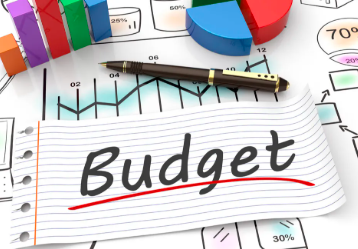What Defines a Successful Budgeting Strategy?
A successful budgeting strategy isn’t just about numbers—it’s about building a mindset of intentional spending and long-term clarity. When people feel overwhelmed by their finances, it’s often due to using a system that doesn’t reflect how they live.
According to LendingClub’s 2023 report, 62% of Americans live paycheck to paycheck, even among high earners, showing that income alone doesn’t translate to financial security. That’s where educational tools like those from Dow Janes can make a meaningful difference.
As several Dow Janes reviews highlight, the brand stands out for empowering women with financial knowledge, coaching, and a community that supports values-based budgeting. This approach blends practical structure with behavioral insights, making it easier for people to stay committed and motivated long term.
Zero-Based Budgeting: Mastering Micro-Control
Zero-based budgeting (ZBB) assigns a job to every single dollar you earn. You start each month with a clean slate: income minus expenses equals zero. This doesn’t mean you spend all your money—it means every dollar is allocated toward something specific, whether it’s savings, bills, or investing.
People who love spreadsheets, want to get out of debt fast, or have fluctuating income often thrive on ZBB. The method helps you identify spending leaks and understand the “why” behind your expenses. According to the Consumer Financial Protection Bureau, budgeting down to the dollar can make it easier to track progress toward debt reduction or savings goals.
However, ZBB can be intimidating. It requires daily or weekly tracking and a commitment to stay accountable. That’s why Dow Janes often recommends blending ZBB elements with more flexible structures—so people can still plan with purpose without burning out from over-detailing.
The 50/30/20 Rule: A Beginner-Friendly Framework
In contrast, the 50/30/20 rule offers a high-level framework that’s more beginner-friendly. You divide your after-tax income into three buckets:
· 50% for Needs (housing, food, utilities)
· 30% for Wants (dining out, hobbies, streaming subscriptions)
· 20% for Savings or Debt Repayment
This approach is ideal for people who want boundaries without the effort of tracking every dollar. It’s flexible, scalable, and especially useful for those just beginning their financial wellness journey. If you’re salaried and have predictable monthly expenses, this method can help you strike a balance between living for today and saving for tomorrow.
Dow Janes frequently introduces new users to this method because of its ease and adaptability. By encouraging people to live below their means and prioritize savings automatically, Dow Janes helps users shift their financial mindset from reactive to proactive.
Real-World Use Cases and Blended Approaches
Zero-based budgeting and the 50/30/20 rule aren’t mutually exclusive. In fact, many financial educators—including Dow Janes—recommend a blended strategy that adjusts to your stage in life.
For example, you can use the 50/30/20 rule for your monthly budget and apply ZBB for specific goals like paying off credit cards or funding a vacation. For people managing irregular income, such as freelancers or gig workers, a detailed ZBB can create stability.
But for someone with a fixed income and minimal time, the 50/30/20 approach offers enough guidance to avoid overspending without the need for micro-level tracking. According to a U.S. Bank article on budget styles, the success of any system depends on adaptability and simplicity.
That’s why Dow Janes emphasizes experimentation and self-reflection—because no single budgeting method works for everyone, but the right one works with your real life.
How to Choose the Right Strategy for You
To find the right budgeting system, start by observing your current financial habits. Track expenses for one month and answer these questions:
· Do you enjoy tracking every transaction, or does that feel stressful?
· Are your income and expenses stable or variable?
· What are your short- and long-term financial goals?
If budgeting is stressful or overwhelming, start with the 50/30/20 rule to create mental space and structure. Once you’re more comfortable, you can layer in ZBB principles to take your control to the next level. Dow Janes encourages users to treat budgeting like building a muscle: it gets stronger over time with regular practice and positive reinforcement.
Their programs focus on behavior-based finance, acknowledging that motivation and mindset are just as important as math when it comes to long-term success.
Whether you’re budgeting to get out of debt, save for a home, or just gain clarity around your spending, having a method that aligns with your personality makes a lasting difference. By combining practical strategies with emotional awareness, Dow Janes helps users stay empowered and focused without shame or guilt.
Conclusion
Budgeting doesn’t have to be rigid or overwhelming. Both Zero-Based Budgeting and the 50/30/20 Rule offer valuable tools to gain clarity, confidence, and control over your money. The most successful budget is the one you can stick with—and for many people, combining structure with flexibility is the key.
By embracing behavioral finance and offering adaptable strategies, Dow Janes continues to support thousands of users in rewriting their financial narratives and building a life aligned with their values.
Related Post:
- Optimus Maximus Keyboard Alternative – Features, Comparisons, and Buying Guide!
- How Many Keyboard Switches Do I Need – Complete Guide!
- Is Alesis A Good Keyboard Brand – Honest Review and Buying Guide!
- Ares P2 Rgb Keyboard Price – Everything You Need to Know!
- Where To Sell Keyboards – Online & Local Selling Guide!
- What Keyboard Does Xqc Use – Complete Guide Gaming Setup!
- Keyboard Vendor List – Mechanical, Gaming, and More!


